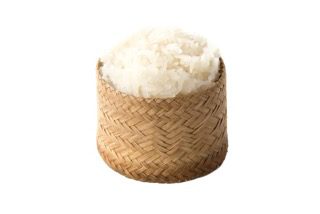

Sticky rice, also known as glutinous rice or sweet rice, is a type of rice that is sticky in texture due to its high starch content. It is a staple in many Asian cuisines, particularly in Japan, Korea, and Southeast Asia. Sticky rice is safe and beneficial for dogs, as it is high in protein and essential minerals such as copper, magnesium, selenium, and zinc. However, desserts and treats made from glutinous rice flour, such as Mochi, should be avoided, as they can cause digestion issues and breathing problems.
Sticky rice is high in protein, which helps build and repair muscles and cells. It contains minerals like selenium, zinc, copper, and magnesium, which are essential for the proper functioning of organs and metabolic processes. Sticky rice also has antioxidants and B vitamins that boost the immune system and reduce inflammation.
Boiled or steamed short-grain sticky rice is generally safe for dogs to eat. However, desserts and treats made of glutinous rice flour, such as Mochi, are not suitable for dogs. These treats are harder to digest and may contain other harmful ingredients that can cause bloating, pancreatic inflammation, and breathing problems. Sticky rice’s texture can also get stuck to the top of the dog’s mouth, causing discomfort.
Serve cooked sticky rice only, soaked in water for an hour before cooking it. Rinse the rice, then boil or steam until soft. Glutinous rice should be served in moderation occasionally, as it is a carbohydrate, and the majority of your dog’s diet should be from quality meat-based protein.
If your dog doesn't have rice allergies, then they can eat sticky rice. Sticky rice is enriched with copper, magnesium, selenium, and zinc. However, desserts and treats made from sticky rice are not allowed for dogs as they can cause health issues.
It is affordable and easy to access, and you can find it at most grocery stores and Asian markets. To serve cooked sticky rice to your dog, soak it in water for an hour before boiling or steaming until soft. Serve it in moderation occasionally, as sticky rice is a carbohydrate and should not make up the majority of your dog's diet.
If you are looking for alternatives, you can try brown rice or quinoa. Brown rice is a great source of fiber, vitamins, and minerals, while quinoa is high in protein and essential amino acids.
Have you ever tried feeding your dog sticky rice? Did they enjoy it? Let us know in the comments below. Remember to always consult your veterinarian before making any significant changes to your dog's diet.
We hope your furry friend enjoys this nutritious and tasty treat!